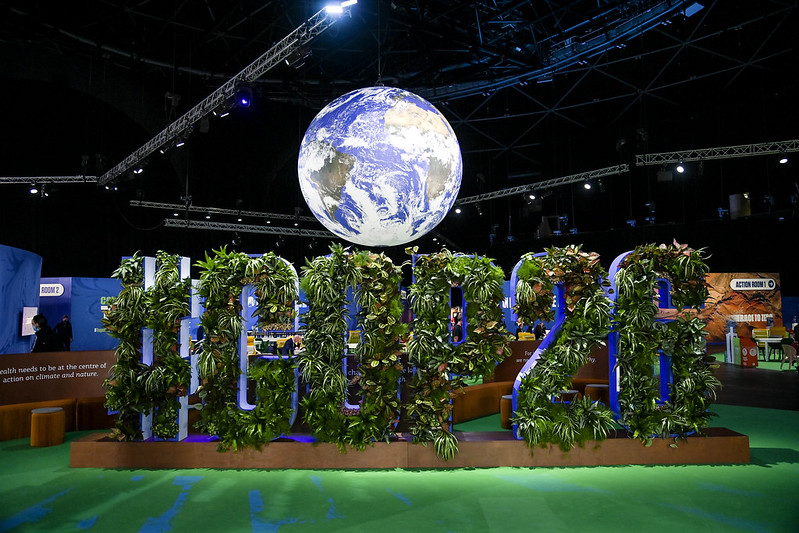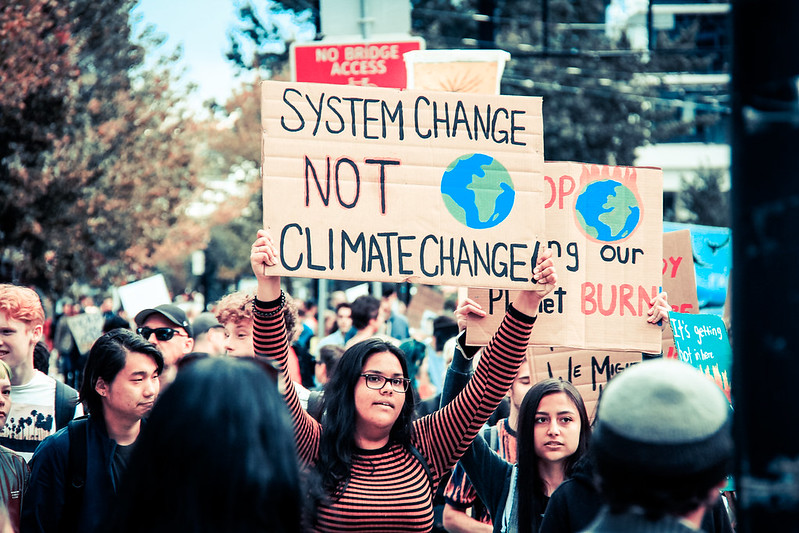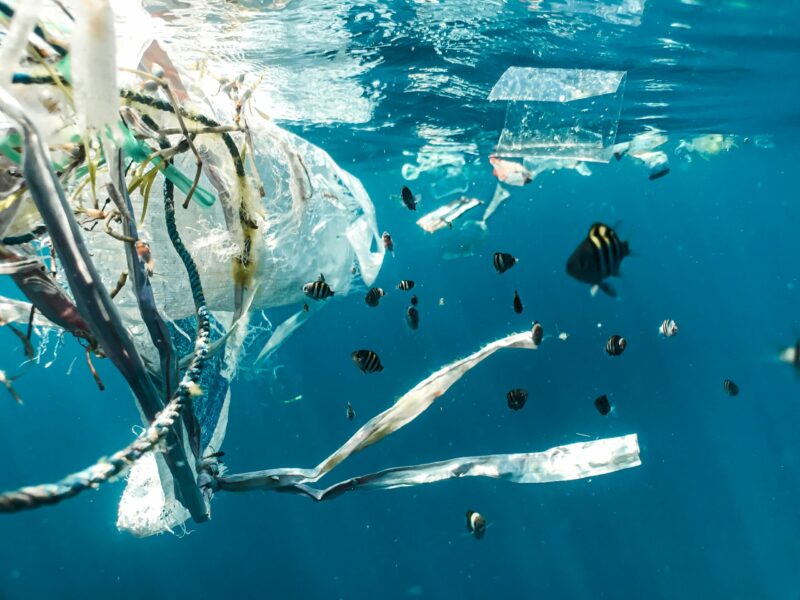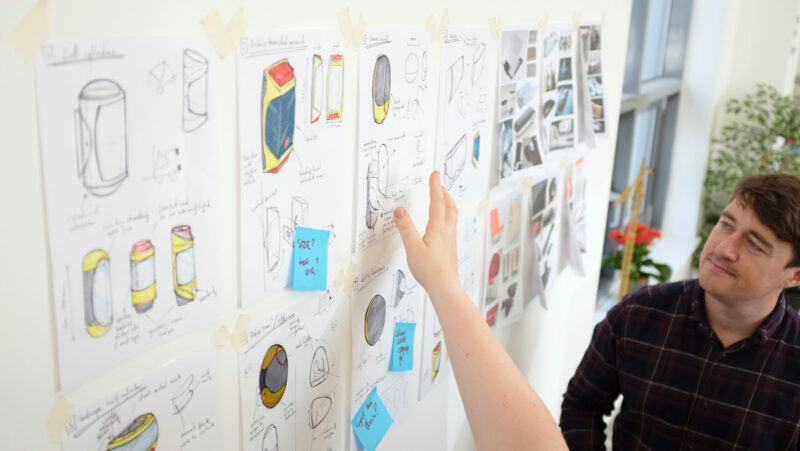The journey to a sustainable future is a highly important one, not just across Scotland, but across the whole world.
As part of the COP26 activity happening around the COP26 meetings in Glasgow which took place in November, we have been running a weekly blog series exploring the role of technology in achieving net zero with our Technology Scotland members.
Since September, we have been hearing from a wide range of our members on a variety of climate focused topics; taking a deep dive into some of the innovative products created to combat climate change with project focused blog pieces as well as thought-pieces, hearing from industry experts on the future of technology and its potential applications as we move forward towards a more sustainable future. Plus lots more!
This week we hear from Filament as they explore the environmental impact of the current systems involved in product design and development and share their thoughts on how we can move forward with sustainability at the forefront.
Design today for a better tomorrow
For the past couple of weeks the eyes of the world have been on Glasgow. People from all nationalities and walks of life have been looking to our city with expectancy, waiting to see what progress will be made at the COP26 conference – and crucially, if it will be enough. But it’s also brought so many people to Glasgow as well – our studio is right next door to the COP26 conference centre and so as we walk to work we have been brushing shoulders with delegates from almost every country in the world! It was an amazing atmosphere, and yet it also brought the reality of climate change to the front and centre: this is a global problem, one that connects us all, and it will need global solutions.

At Filament we are Product Design Engineers by trade, and so it can be easy to feel sort of trapped between a rock and a hard place. We love creating things that help people or bring joy to them and we’re equally fascinated by the manufacturing process and the interconnectedness of the global supply chain. Yet we’re under no illusion that the wave of new products over the past hundred years or so isn’t in some way responsible for the mess we’re in today. The global supply chain has had devastating effects on the environment and on people’s livelihoods. The fallout from some manufacturing processes is quite literally toxic. As a company we really care about the environment – but we also believe in the power of design to make people’s lives better. So where do we go from here?
To design or not design?
What if we stopped manufacturing anything new? Is that the key to a sustainable future? As straightforward a solution as that might seem, I would actually argue it would only make the problem worse – for two reasons.
First of all, we just can’t afford to halt progress where we are right now! The world is still full of ‘bad’ product design – bad for people and bad for the environment. Products have short lives, they end up in the landfill after a year, they can’t be re-used or recycled, and their manufacture relies on finite resources. There is a lot of good design out there – but if we threw in the towel as designers then the problems of today would just keep rolling on. We need to keep designing – but we need to design better. We need to create excellent products that push the ‘bad’ products out of the market, and that drive consumers to vote for a sustainable future with their wallets and feet.
For example if a product is durable and if it’s a joy to use, then the user will want to keep it – it will break the chain of a throwaway society. The positive impact of a single product being used for longer (and so needing to be replaced less frequently) can far outweigh the impact of its manufacture. And if your product is more usable and longer lived than the competition – if it’s a better product – then it will begin to push the competition out of the market, or force them to innovate more sustainable solutions as well. New, well designed products can have a ripple effect which makes the whole field of product design better for the environment. If we make better, we can make less.
Secondly, we can’t afford to stop designing because the world and it’s people are constantly changing. By any forecast this century is going to look very different to the last and with that will come a whole host of new challenges. Product Designers and Engineers need to be right there at the forefront, solving these new problems and creating products and technologies that meet the needs of a rapidly changing world. We need new products because we are facing new challenges – and design has the power to meet them head on.
So it’s not whether to design or not to design. It’s make better, make less. Some examples that the Filament team have been tackling of late are:
- Off grid sun powered solar ovens for developing countries that not only cooks but also purifies water and generates electricity for a small community.
- Traceable circular economy solutions tackling single use packaging currently in trial with Starbucks and Just Eat.
- Working with paint brands developing “Buy back” schemes that leverage the assets in leftover paint waste whilst reducing waste to landfill.
- Smart vision systems for recycling centres to help detect contaminants in waste.
- AI powered IoT systems within the EV charging space that promotes better user interaction whilst increasing efficiency and revenue.
All of the above examples benefit from our studios “connected” approach where the solution is greater than the product, it’s positive interaction and intervention across all aspects of physical, digital and service.
Thinking in Systems
And that idea of ‘connected systems’ brings us onto the next point. We need to make better and make less, but what are some ways that we can approach that? Well, as the placard says we need system change, not climate change.

One of the main principles of the circular economy (the idea that we should repair, reuse and recycle products/materials to keep them in use for as long as possible) is that we need to think in systems. For a long time Product Design treated the ‘use phase’ of a product in isolation – the beginning, and especially the end, of a product’s life was more of an afterthought or just a way to get to the main event. But that sort of blinkered approach is partly what led to today’s problems. Instead, we need to consider the whole lifespan of a product, right from how and where it’s manufactured through to how it’s transported, how it’s used, and what happens to it when the use phase is over.
Thankfully this approach is becoming more and more commonplace, but we can zoom out still further to wider systems. How does the product interact with other products that a company might develop? Could they share parts, materials, could ‘waste’ from one product be a raw material for another? Could the business implement some sort of take-back scheme (like the paint companies mentioned above) to better control the post-use phase, or refurbish parts of a returned product to re-use in new ones? Or could the business pivot entirely – moving to a subscription model so that one single product can have near constant use (and provide repeat income without new raw material) instead of languishing in a bottom drawer somewhere.
The answers to these questions will differ by situation, but they do need to be asked. And the great thing is that this ‘systems thinking’ has benefits far beyond sustainability too. We’ve already mentioned the benefits of re-monetising the same product, but take-back schemes or subscription models can also provide valuable information on what parts of a product are wearing out or failing quickest.
Fundamentally, the language of designers needs to change. It’s not design for end-of-life – material doesn’t die! Once the raw materials have been extracted from the earth they are either in use or not. We need to start designing for end-of-use, promoting re-use or developing new value chains from recycling. Thinking in systems can help us to do that.
Where do we go from here?
COP26 has brought the attention of the world to the challenges facing it. As we write this we’re yet to see what the outcome of the discussions will be, but the reality is straightforward: The consequences of climate change will be felt across the globe, but especially by developing nations – those that contributed the least to the problem. And so we need to act, no matter what the result of the negotiations is.
So, as Product Design Engineers, how do we do that? By having a wider view than the product immediately in front of us. We can design with one eye on the systems that our products live in. We can imagine new ways to keep raw materials in use for longer, instead of ending up in landfill. We can think hard about product use – choosing socially and environmentally responsible manufacturing processes, designing to minimise waste, or designing for repair and re-use. We can design better products for the challenges of the future.
Individually our contribution might be small – after all, climate change is a global problem. But it’s also one that the whole world is now facing up to. We won’t be working on the problem alone – in every country on earth there are people tackling it from a different angle! By designing better, then, with everything that entails, we can be part of that global solution. If that isn’t a call to creativity, we don’t know what is!


